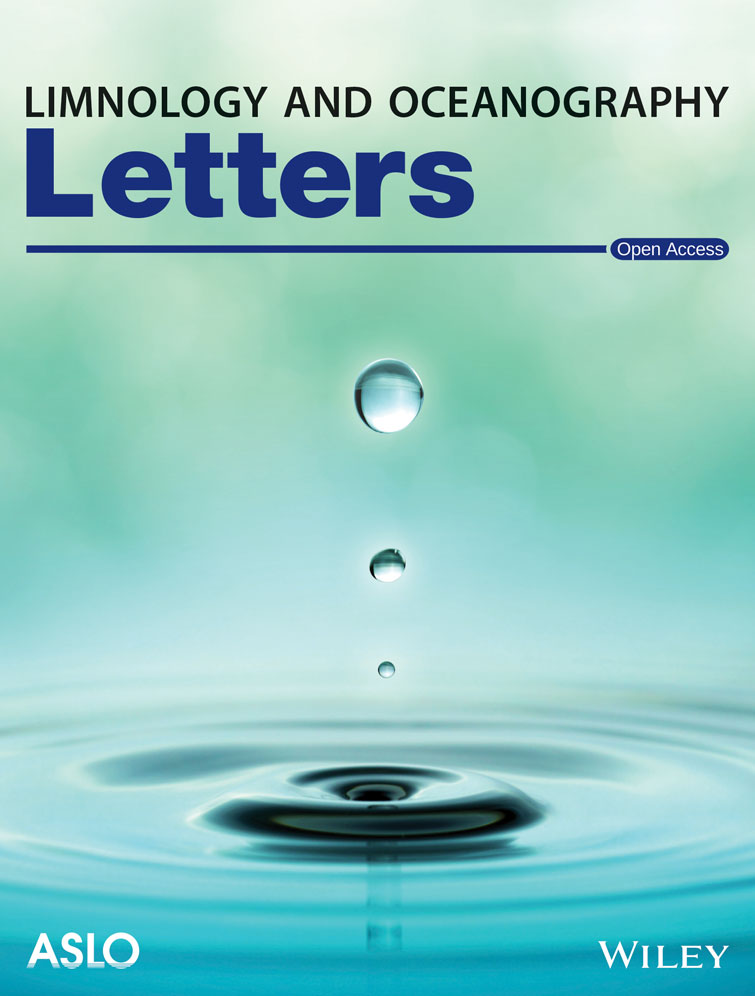Integrating phytoplankton phenology, traits, and model‐data fusion to advance bloom prediction
IF 5
2区 地球科学
Q1 LIMNOLOGY
引用次数: 0
Abstract
While there is a diversity of approaches for modeling phytoplankton blooms, their accuracy in predicting the onset and manifestation of a bloom is still lagging behind what is needed to support effective management. We outline a framework that integrates trait theory and ecosystem modeling to improve bloom prediction. This framework builds on the concept that the phenology of blooms is determined by the dynamic interaction between the environment and traits within the phytoplankton community. Phytoplankton groups exhibit a collection of traits that govern the interplay of processes that ultimately control the phases of bloom initiation, maintenance, and collapse. An example of process‐trait mapping is used to demonstrate a more consistent approach to bloom model parameterization that allows better alignment with models and laboratory‐ and ecosystem‐scale datasets. Further approaches linking statistical‐mechanistic models to trait parameter databases are discussed as a way to help optimize models to better simulate bloom phenology and allow them to support a wider range of management needs.整合浮游植物物候、性状和模型数据融合以推进水华预测
虽然有各种各样的方法来模拟浮游植物的繁殖,但它们在预测繁殖的开始和表现方面的准确性仍然落后于支持有效管理所需的水平。我们概述了一个整合性状理论和生态系统建模的框架,以提高开花预测。该框架建立在这样一个概念之上,即藻华的物候是由浮游植物群落内部环境和性状之间的动态相互作用决定的。浮游植物群表现出一系列特征,这些特征支配着最终控制水华开始、维持和崩溃阶段的过程的相互作用。本文以过程-特征映射为例,展示了一种更加一致的方法来实现bloom模型参数化,该方法可以更好地与模型、实验室和生态系统规模的数据集保持一致。本文还讨论了将统计机制模型与性状参数数据库联系起来的进一步方法,以帮助优化模型,更好地模拟开花物候,并允许它们支持更广泛的管理需求。
本文章由计算机程序翻译,如有差异,请以英文原文为准。
求助全文
约1分钟内获得全文
求助全文
来源期刊

Limnology and Oceanography Letters
Multiple-
CiteScore
10.00
自引率
3.80%
发文量
63
审稿时长
25 weeks
期刊介绍:
Limnology and Oceanography Letters (LO-Letters) serves as a platform for communicating the latest innovative and trend-setting research in the aquatic sciences. Manuscripts submitted to LO-Letters are expected to present high-impact, cutting-edge results, discoveries, or conceptual developments across all areas of limnology and oceanography, including their integration. Selection criteria for manuscripts include their broad relevance to the field, strong empirical and conceptual foundations, succinct and elegant conclusions, and potential to advance knowledge in aquatic sciences.
 求助内容:
求助内容: 应助结果提醒方式:
应助结果提醒方式:


